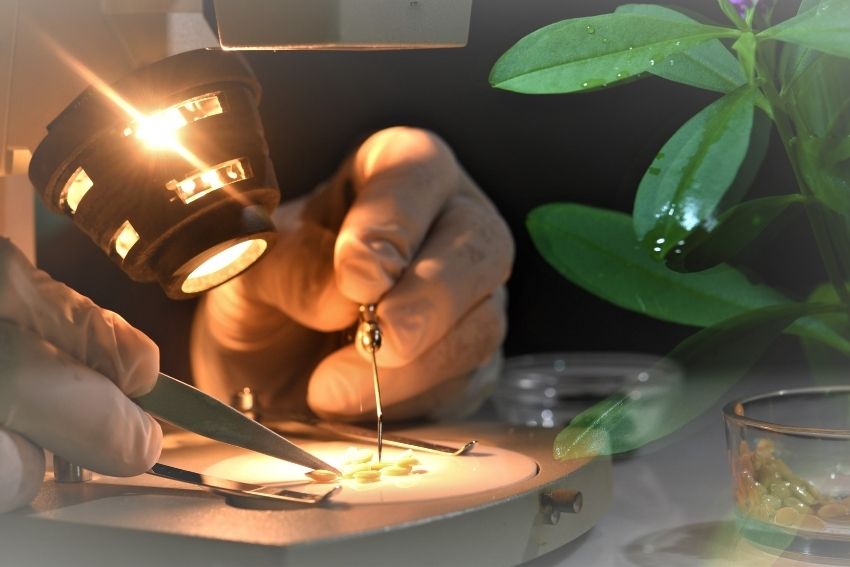What Is Transpiration?-Transpiration is the process by which plants lose water vapor through small openings in their leaves called stomata. This process is essential for maintaining the plant’s internal water balance and helps with the uptake of minerals from the soil. Transpiration in plants is a key concept in GCSE Biology, as it explains how water moves through plants and how various factors, like temperature and humidity, influence this movement. Understanding transpiration is crucial for understanding plant health and growth, making it an important topic in biology studies.

The Transpiration Stream
The transpiration stream refers to the continuous movement of water from the roots, through the stem, and into the leaves, where it evaporates into the atmosphere. This process begins when water is absorbed by the roots from the soil and moves upward through the plant’s vascular system, primarily through the xylem vessels. As water evaporates from the leaf surface during transpiration in plants, it creates a suction effect, drawing more water into the plant. This maintains the flow of water and also supports nutrient transport, helping the plant stay hydrated and nourished. Understanding the transpiration stream is crucial in GCSE Biology for explaining how plants regulate water and nutrients.
What is Transpiration and How to Measure its Rate?
To quantify the rate of transpiration, scientists often use a device called a potometer. This instrument measures the volume of water absorbed by a plant over time, providing an indirect estimate of the rate at which transpiration occurs. The setup typically includes a plant shoot, a graduated tube, and a water reservoir. By tracking the movement of an air bubble in the tube, scientists can assess how environmental factors like light intensity, humidity, and wind speed influence the rate of transpiration in plants. Understanding how these factors affect transpiration is essential in GCSE Biology, as it helps explain how plants manage water loss and uptake.
Factors Affecting Transpiration
Several environmental factors influence transpiration and how it occurs in plants:
- Light Intensity: Increased light causes stomata to open wider, enhancing water vapor loss and increasing the rate of transpiration.
- Temperature: Higher temperatures increase the rate of evaporation from the leaf surface, which leads to more transpiration as the plant loses water.
- Humidity: Lower humidity levels outside the plant create a larger concentration gradient, promoting water loss as moisture moves from the plant to the drier air.
- Wind Speed: Wind removes water vapor from around the leaf surface, speeding up transpiration by reducing the moisture near the leaf.
Understanding these factors is crucial for grasping what is transpiration and managing plant health under different environmental conditions.

Importance of Transpiration and Its Vital Functions
What is transpiration and why is it so important? Transpiration serves several vital functions in plants:
- Cooling: The evaporation of water helps regulate leaf temperature, preventing overheating and maintaining optimal conditions for photosynthesis.
- Nutrient Transport: Transpiration facilitates the upward movement of minerals and nutrients from the soil through the plant’s vascular system, primarily the xylem.
- Water Regulation: It maintains turgor pressure, which supports cell structure and function, ensuring the plant remains rigid and healthy.
By understanding what is transpiration and its vital functions, students can appreciate the integral role it plays in plant physiology and overall plant health.
Conclusion
In conclusion, understanding what is transpiration and its vital functions is key to appreciating the intricate processes that keep plants healthy. From cooling to nutrient transport and water regulation, transpiration plays an essential role in plant physiology. By learning how transpiration works, students can gain a deeper understanding of how plants adapt and thrive in their environment.
If you need extra help, online GCSE Biology tutors can offer tailored guidance to help you master concepts like transpiration in plants and other essential topics.
Ready to take your knowledge of GCSE Biology further? Keep exploring and mastering the fascinating world of plants and their processes!
FAQs:
What is transpiration?
Transpiration is the process by which plants lose water vapor through small pores in their leaves called stomata. This loss of water helps maintain the plant’s water balance, supports nutrient uptake, and cools the plant.
What is the transpiration stream?
The transpiration stream is the continuous movement of water through a plant, from the roots to the leaves, where it evaporates into the atmosphere. This process involves the uptake of water from the soil through the roots, the movement through the plant’s vascular system (mainly the xylem), and the release of water vapor through the stomata in the leaves.
What is transpiration in plants?
Transpiration in plants refers to the evaporation of water from the plant’s surface, mainly through the leaves. It’s essential for the plant’s water regulation and nutrient transport, allowing for the movement of minerals from the soil to the rest of the plant.
What piece of equipment is required to measure the rate of transpiration?
To measure the rate of transpiration, a potometer is commonly used. This device measures the amount of water a plant absorbs over time, providing an indirect estimate of the transpiration rate. It tracks the movement of an air bubble in a tube connected to the plant, allowing scientists to quantify water loss.








